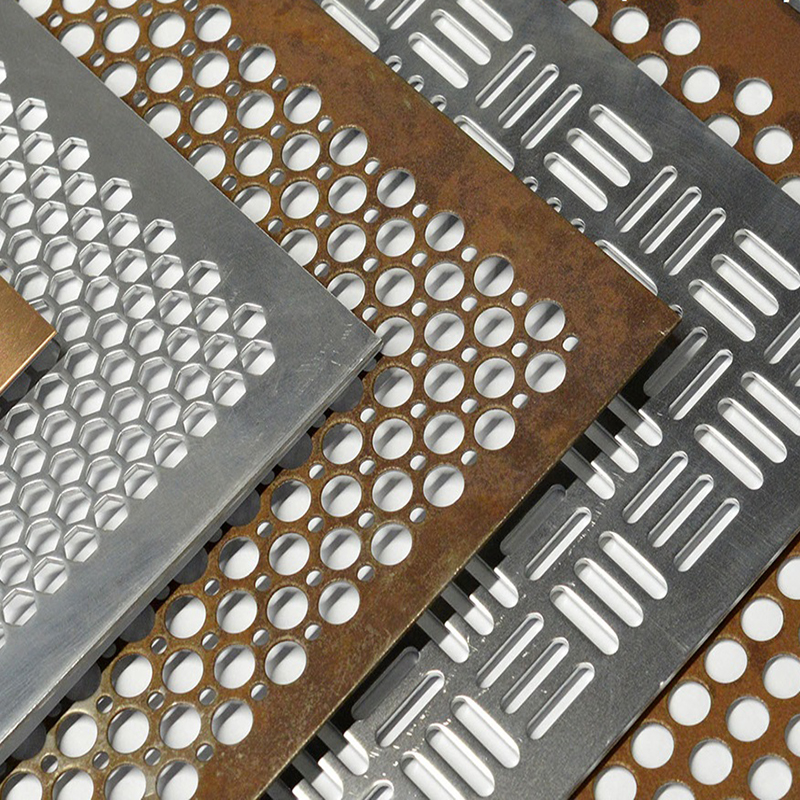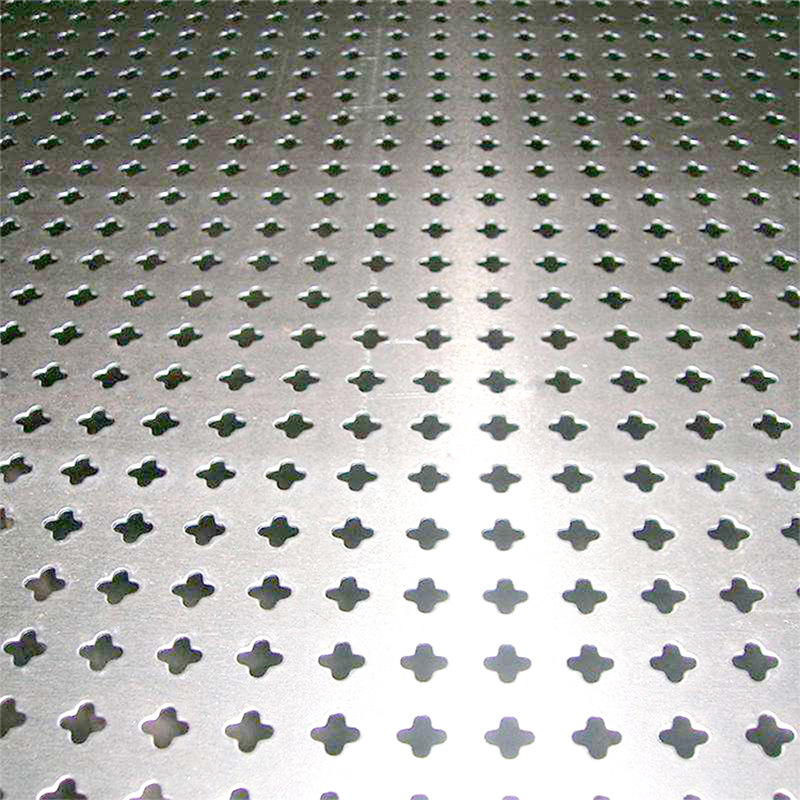-
+86 15030157877
-
sales@galvanizedmetalmesh.com
Oct . 12, 2025 11:00 Back to list
Perforated Metal Mesh – Stainless, Custom & Wholesale
Perforated Metal Mesh: Real-World Specs, Use Cases, and Buying Tips
If you’ve ever spec’d perforated metal mesh for a facade or a screening job, you know the drill: hole size, pitch, finish—and a million tiny trade-offs. To be honest, there’s more nuance than most brochures admit. Round-hole patterns remain the workhorse, and yes, pitch means the center-to-center distance. For this supplier, all sheets are on a triangular pitch, which is the sweet spot for strength versus open area. I’ve toured Anping plants before; the tooling racks look like libraries of punch dies.

What’s trending (and why it matters)
- Parametric facades with graded open area for daylighting and ventilation.
- Acoustic skins: perforated faces + mineral wool, tuned NRC (real-world may vary).
- Sustainability: higher recycled content and long-life finishes (PVDF, duplex coats).
- Automation: turret presses and coil-fed lines for tighter tolerances, fewer burrs.

Core specifications (the stuff that gets jobs approved)
Materials run stainless, galvanized steel, aluminum—plus decorative copper/brass on request. In practice, architects default to perforated metal mesh in 304/316 for coastal or food-grade projects, and galvanized (G90/Z275-class) for parking screens.

| Parameter | Option / Range | Notes (≈, real-world may vary) |
|---|---|---|
| Materials | SS 304/316 (ASTM A240); Galv steel (ASTM A653 / EN 10346); Al 1100/3003/5052 (ASTM B209) | Copper/Brass/Corten on request |
| Thickness (t) | ≈0.5–3.0 mm | Heavier gauges by coil program |
| Hole (d) & Pitch (p) | d ≈1.0–20 mm; triangular pitch p ≈1.5d typical | Open area OA ≈ πd²/(2√3·p²) |
| Patterns | Round (most popular), square, slot, hex, decorative | Custom dies possible |
| Sheet/Coil | Sheets 1000×2000, 1250×2500 mm; Coils 1000–1500 mm width | Cut-to-size on request |
| Finishes | Mill, hot-dip galv, anodized (Al), powder/PVDF | ISO 12944 guidance for corrosivity |
| Tolerances | Per DIN 24041/24042 or IPA recommendations | Hole dia, pitch, edge margins |
Process flow, QA, and service life
- Material selection (coil certs tracked; heat numbers logged).
- Turret/press perforation (triangular pitch tooling), then leveling.
- Deburring and edge trimming; optional forming/flanging.
- Surface treatment: galvanizing, anodizing, or powder/PVDF.
- QC: hole gauge checks, flatness, coating thickness; salt spray per ASTM B117 / ISO 9227.
- Packing: film + crates for export from South Industrial Zone 07, Anping County, Hebei, China.
Typical outdoor life: galv + powder ≈ 15–25 years (C3–C4), 316 SS often 25–30+ years near marine zones—site conditions matter.
Applications and advantages
- Architectural facades, balustrades, sunscreens (daylight + airflow).
- Acoustic enclosures when paired with absorptive backing.
- Filtration, sieving, security screens, HVAC grilles, food equipment.
- Advantages: high strength-to-weight, consistent aperture, easy to fabricate, recyclable.

Vendor comparison (shortlist smarter)
| Vendor | Lead time | Certs | Notables | Typical Price ≈ |
|---|---|---|---|---|
| Anping Manufacturer | 7–12 days MTO | ISO 9001; coating tests to ASTM B117 | Triangular pitch tooling; tight edge margins | $12–$35/m² (pattern/finish dependent) |
| Regional Distributor | 3–5 days (stock) | Varies | Limited patterns; quick pickup | $18–$50/m² |
| Overseas Premium Brand | 4–6 weeks | ISO 9001; EN 13501 fire data | Facade-grade PVDF systems | $40–$90/m² |
Customization and field notes
Most requests are custom: graded OA, special edge margins for clamps, or folded stiffeners. One contractor told me their perforated metal mesh parking facade cut perceived noise by “about 6 dB” after adding mineral wool—informal, but believable. Another food-plant client swapped woven for perforated to stop fraying and cleaning hassles.
Sample test snapshot: G90 galv + 80µm polyester powder reached ≈720 h to first red rust in ASTM B117; PVDF systems often exceed 1,000 h. Always validate with your project’s exposure category (ISO 12944).

Quick buying checklist
- Material + finish for the corrosivity class (C2–C5).
- Hole d, pitch p, open area, and edge margins (clamp zones).
- Flatness and burr spec after coating.
- Certificates: mill, coating thickness, salt spray, and—if relevant—EN 13501 classification for assemblies.
It seems simple—until it isn’t. Get samples punched from the actual coil lot when possible. And if you need a starting point, the Anping line ships globally from Hebei with cut-to-size service and triangular pitch as standard on perforated metal mesh.
Authoritative citations
- ASTM A240/A240M – Standard Specification for Chromium and Chromium-Nickel Stainless Steel Plate, Sheet, and Strip.
- ASTM A653/A653M – Standard Specification for Steel Sheet, Zinc-Coated (Galvanized).
- ASTM B117 – Standard Practice for Operating Salt Spray (Fog) Apparatus.
- ISO 9227 – Corrosion tests in artificial atmospheres – Salt spray tests.
- ISO 12944 – Paints and varnishes — Corrosion protection of steel structures by protective paint systems.
- EN 10346 – Continuously hot-dip coated steel flat products.
- DIN 24041/24042 – Perforated plates tolerances and patterns (round holes, staggered pitch).
- EN 13501-1 – Fire classification of construction products and building elements.
-
Durable Fence Barbed Wire Solutions for Global Security & Agriculture
NewsNov.24,2025
-
Comprehensive Guide to Barbed Fence Wire – Durability, Uses & Innovations
NewsNov.23,2025
-
Barb Wire Price Per Roll – Understanding Costs, Trends & Global Applications
NewsNov.22,2025
-
Stainless Steel Barbed Wire: Durable Security for Global Industries & Relief Efforts
NewsNov.22,2025
-
Comprehensive Guide to Razor Wire Prices: Factors, Trends & Vendors
NewsNov.21,2025
-
Concertina Razor Wire: The Ultimate Guide to Secure, Practical Barrier Solutions
NewsNov.20,2025



